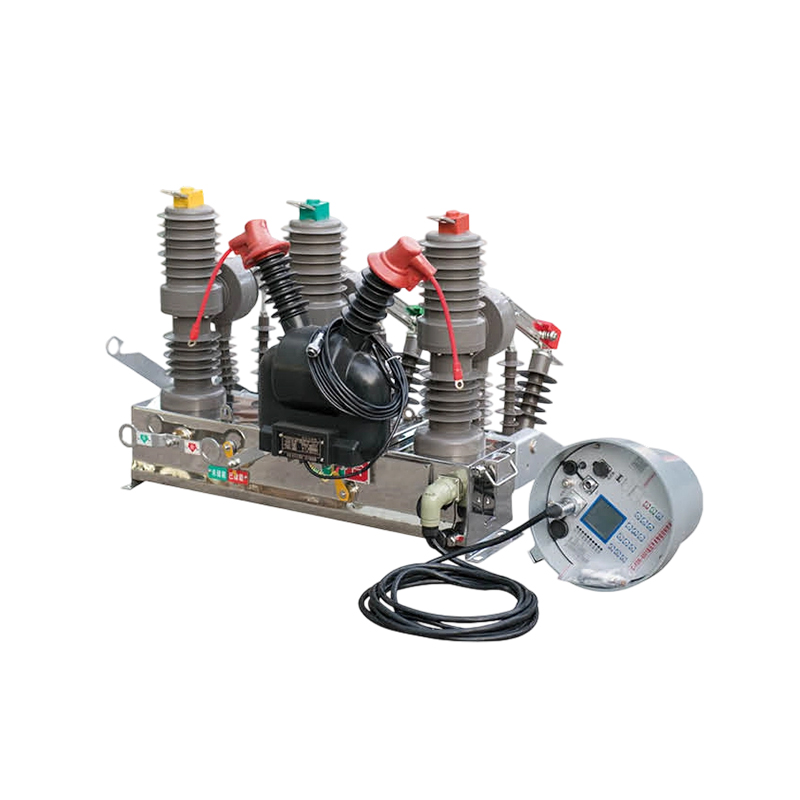Industry News
Digital Circuit Breaker: Innovation in Power Management and Energy Efficiency
Introduction
Infrastructure projects are shifting toward smarter and more sustainable energy systems. Unlike traditional mechanical breakers, digital versions integrate advanced electronics, sensors, and communication features, making them an essential tool for modern power management.

Digital Circuit Breaker: Smart Applications in Modern Power Systems
One of the most important functions of a digital circuit breaker is its ability to provide programmable control and remote operation. In industrial facilities and commercial buildings, operators can configure breakers to match the exact needs of machinery and equipment. This flexibility not only supports smoother operation but also reduces downtime in the event of faults.
Another benefit comes from real-time monitoring. Digital circuit breakers continuously collect data on current, voltage, and system performance. This information can be transmitted to control centers or cloud platforms, where it is analyzed for potential issues.
In critical infrastructure, such as data centers or transportation hubs, the value of quick diagnostics and targeted responses is clear. Instead of relying solely on manual checks, digital breakers allow operators to resolve issues faster and with greater precision.
Digital Circuit Breaker: Energy Efficiency and Sustainability
Energy efficiency has become a top priority for both public and private sectors, and digital circuit breakers contribute significantly to this goal. Facility managers can identify inefficient processes, redistribute loads, and cut unnecessary consumption.
For example, in buildings with solar panels and battery storage, digital circuit breakers can manage bidirectional energy flows. They ensure that excess solar power is safely stored or redirected, while also providing protection against overload. They also support the stability of microgrids by balancing renewable energy sources with conventional power supply.
The sustainability aspect extends to large-scale applications as well. By enabling smarter energy distribution and reducing waste, digital circuit breakers support global initiatives aimed at lowering carbon emissions and promoting clean energy.
Digital Circuit Breaker: Market Trends and Future Outlook
The market for digital circuit breakers is expanding quickly as more regions invest in modern grid infrastructure. Growing demand for renewable energy integration, electric vehicles, and smart cities has increased the need for reliable and adaptable protection systems.
Technology development is also shaping the sector. Manufacturers are moving from purely hardware-based products toward digital platforms that combine software, sensors, and connectivity. This evolution allows for remote updates, predictive analytics, and integration with broader energy management systems.
Future trends suggest that digital circuit breakers will become even more important in distributed energy systems. The rise of new technologies, including EV charging and energy storage, is creating a stronger need for advanced control in households and businesses. Digital breakers are well-positioned to provide the safety, adaptability, and data-driven insight required in this changing environment.
Conclusion
The journey toward smarter energy systems highlights the role of digital circuit breakers in modern infrastructure. Their integration of programmable control, real-time monitoring, and advanced data capabilities makes them highly valuable for smart applications. At the same time, they contribute to energy efficiency and sustainability goals while aligning with broader market trends in renewable integration and grid modernization. The Digital Circuit Breaker will remain a central component in shaping the future of power management.
For product information and inquiries, please contact Huapu Company
Next
Vacuum Circuit Breaker: Trends in Environmental Safety, Smart Monitoring, and Fault-Handling Capacity
<p><span><a href="https://www.hp-electric.com/product/engineering-vacuum-circuit...
View MoreNews Center
Hot Information
-
Digital Circuit Breaker: Innovation in Power Management and Energy Efficiency
2025-10-24
-
Vacuum Circuit Breaker: Trends in Environmental Safety, Smart Monitoring, and Fault-Handling Capacity
2025-10-17
-
Mobile Photovoltaic Cabin: Trends in Off-Grid Energy, Design, and Technological Integration
2025-10-10
- PRODUCTS
- New Energy Power Distribution Equipment
- Box Type Substation
- Cable Branch Box/Switch Station
- High Voltage Switchgear
- Low Voltage Switchgear
- Engineering Vacuum Circuit Breaker
- New Energy Vehicle Floor Charging Pile
- Commercial Energy Storage
- Photovoltaic Complete Box
- High Voltage Arrester
- INFORMATION
-
-
Phone+86-13868788848
+86-13356188725 -
Tel+86-0577-88810567
-
E-mail
-
AddNo. 59, Youyi Road, Xinguang Industrial Zone, Liushi Town, Yueqing City, Zhejiang, China
-
- ENQUIRE WITH US
Photovoltaic Module Manufacturer




 English
English  中文简体
中文简体  русский
русский  Español
Español  عربى
عربى 


